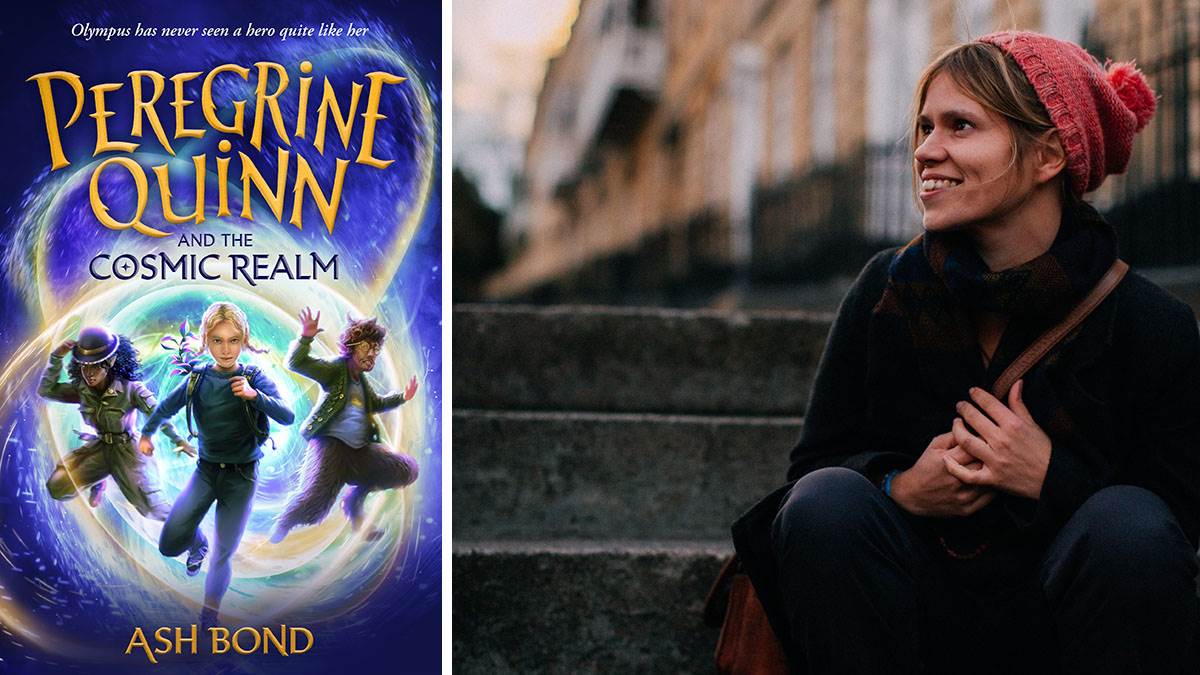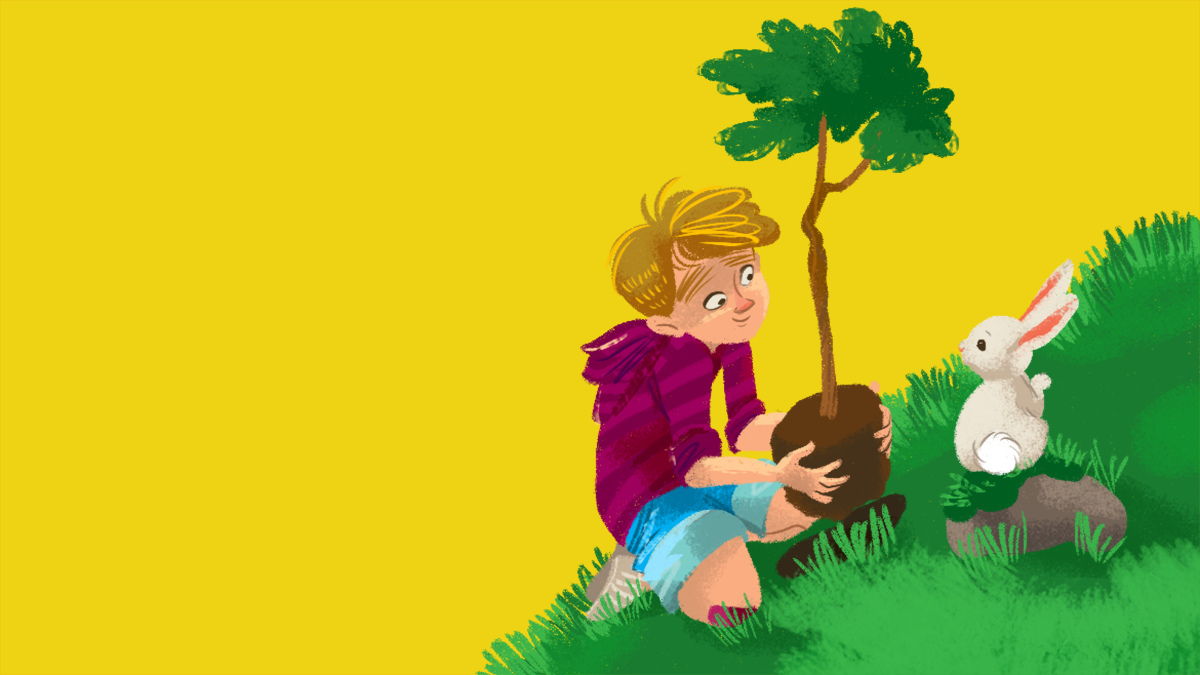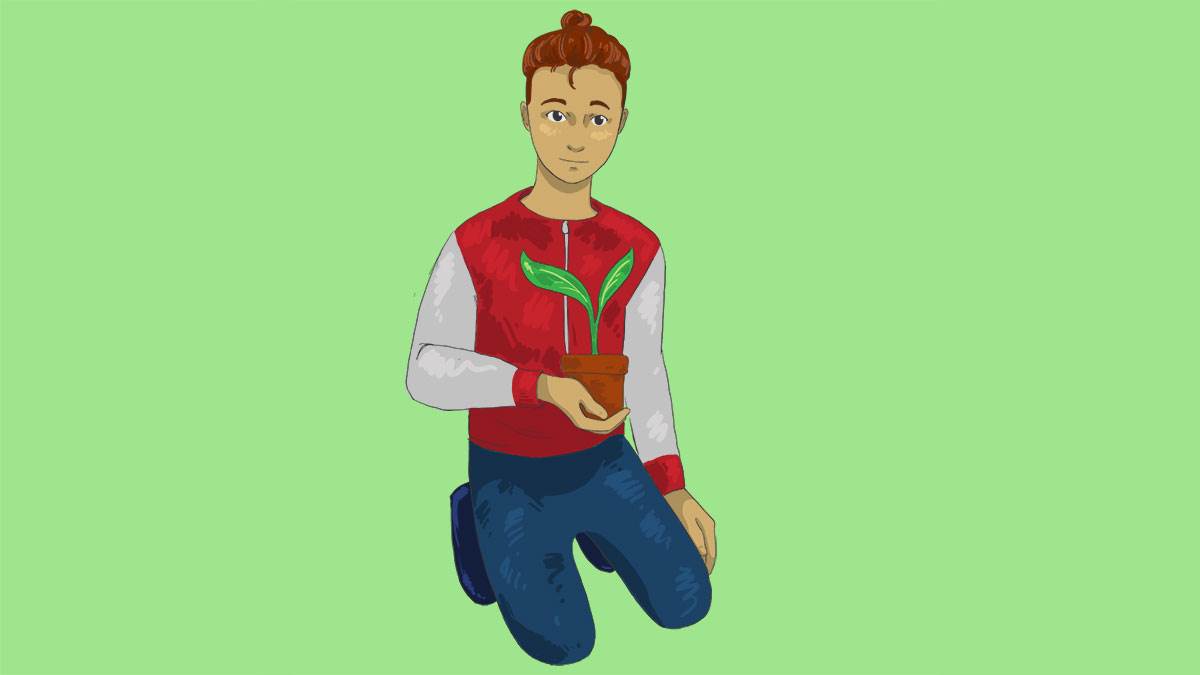Using fiction to unlock the magic of plants
Published on: 22 April 2024
Peregrine Quinn and the Cosmic Realm author Ash Bond explores how books can help to bring nature into the classroom.

My mum is an artist and anyone who has ever lived with an artist will tell you that the house always becomes a studio. There is no fighting it, so you might as well give in.
Luckily for us, my mum was an artist fascinated with the natural world. I remember plants, twigs, pinecones and stones constantly being brought home in carrier bags from walks, ready to be tipped out onto the kitchen table and sorted through hungrily like sweets after an evening trick-or-treating.
Those treasures that didn’t find their way into my mum’s classroom (or art projects) were then arranged for us to draw. Though I liked the stones (my desk is still littered with them), I liked drawing the plants best.
I found that the longer I sat with the plant, the closer I peered into its petals or traced the outlines of its leaves, the more I felt something like... enchantment. This feeling – so wonderfully captured by the artist Georgia O’Keefe – was like getting pulled into another universe, another miraculously non-urban world.
Plants as portals into magical worlds

Illustration: Erika Meza
Many fiction writers have explored this idea of plants as gateways to the unseen, or entrances into magical lands.
We might think of Yggdrasil, the Ash tree that in Norse mythology is said to stand in the centre of the cosmos, connecting all of the Nine Worlds. Or the wardrobe in Narnia – that most famous portal to another world – that we find out, if we read all of the way to the end of the Chronicles, is in fact made from the wood of an enchanted tree.
In a classroom setting an interesting activity might be to point to a tree on the school grounds, or in a picture, and imagine it as a gateway to another world.
What world might lie on the other side? How would you enter the world – perhaps through a door in the trunk? Or would you need to climb up the tree, or burrow under its roots?
Of course, it doesn’t have to be a tree. Jack did pretty well out of his adventure up the beanstalk, and in my novel Peregrine Quinn and the Cosmic Realm the plant that Peregrine carries with her looks very much like a houseplant (though looks can be deceiving…) and is called Bernadette.
If you have a houseplant handy, another activity might be to offer it up as a ‘magical plant’.
Now, how did this plant grow? How did it come to be in the classroom? What kind of magic does this plant have? As in Jack and the Beanstalk, this might be the beginning of a grand adventure story!
Plants creating their own worlds

Illustration: Emily Rowland
In some children’s fiction, plants are not just the gateways to these magical worlds, but make up the worlds themselves.
Like many of us I was enamoured with The Secret Garden as a child, where the grieving Mary Lennox finds a world of wild brilliance, so different from the sombre grey world that she occupies. Though the story is problematic in many ways, the idea that this flower-filled world was just on the other side of the door, and all she needed was a key is beautiful.
More recently, we have had Pari Thomson’s award-winning Greenwild: The World Behind the Door, a sparkling book which takes us into a magical Kew Gardens.
If we were to bring some keys into class – or to show pictures of a selection of keys – then a budding writer could decide what kind of world that key might unlock, or even draw a map of the world behind the door!
This same dusty houseplant in the corner could be bounced off again as inspiration, as perhaps it actually comes from a world behind the door. I wonder what other kind of wonderful plants might exist there?
If these plants are having to hide behind a secret door, this might also lead to discussions around climate change and ways that we might protect our natural resources, such as creating Sites of Special Scientific Interest and Areas of Outstanding Natural Beauty.
Both plants and the books that celebrate them are treasure chests of wonder. In Peregrine Quinn and the Cosmic Realm, Peregrine’s godfather Daedalus Bloom runs a Plant Clinic, which is perhaps my favourite of the settings in the book. Daedalus’s Plant Clinic is wild, chaotic, and stuffed with the unexpected – much like the plants themselves.
Peregrine Quinn and the Cosmic Realm by Ash Bond is out now.
Topics: Environment, Nature, Features





